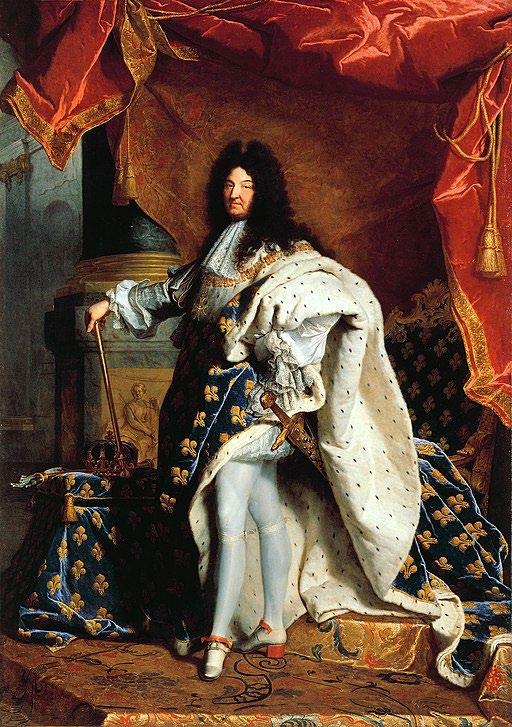
11 minute read
Royal Reign
Ladies of the Grand & Petit Trianon royal reign
The Grand Trianon K ing Louis XIV of France purchased Trianon, a hamlet on the outskirts of Versailles in 1668. Two years later, he commissioned architect, Louis Le Vau, to design a porcelain tiled pavilion. The Trianon de Porcelaine was completed in 1672 to serve as a retreat for him and his chief mistress, the Marquise de Montespan. The “reign” of Madame de Montespan began in 1667 when she wiggled her way into seducing the King, even though she was a married woman at the time, as was the King to Queen Marie-Thérèse. The King’s current mistress, Louise de La Vallière, laughed at Montespan’s efforts. However, Montespan prevailed when she dropped her towel for the King. Louise then played second fiddle to the King, as he placed the two mistresses in connecting rooms so he had access to both ladies. Louise later joined a convent, embarrassed that she had been replaced by a much younger woman.
Advertisement
Montespan officially separated from her husband, Louis Henri de Pardaillan de Gondrin, the Marquis of Montespan in 1674. However, this did not stop her from having seven illegitimate children with the King with their first child born in 1669. Portriat of King Louis XIV, painted by Hyacinthe Rigaud on display at the louvre museum. In 1701 Louis XIV commissioned a copy of the portrait, that portrait is on display in the Apollo Salon of the Château de Versailles’ Grand Apartment. If diamonds are a girl’s best friend, then what is to be said about private palaces in the French countryside mere acres away from Versailles with gardens abound for mistresses of French Kings?
As a new widow, Madame Scarron was about to leave for Lisbon as a lady-in-waiting to the new Queen of Portugal, Marie-Françoise de Nemours, but she met Madame de Montespan and Montespan took such a liking to her that she had the King reinstate her pension enabling her to stay in Paris. Madame Scarron become the caretaker for Madame de Montespan’s first child with King Louis XIV, giving her a large income and staff of servants. She later became a royal governess. As a governess, she was one of the few people allowed to converse with the King as an equal. The King was charmed by her ability to speak without holding back, though he didn’t much care for her at first. However, he was beginning to tire of Madame de Montespan’s temper and found Madame Scarron increasingly favorable.
After refusing a few attempts to make her his mistress, and telling him to pay attention to his neglected wife the Queen, Madame Scarron later gave in to his persistence. Queen Marie-Thérèse tolerated her husband’s infidelity, and she even responded warmly to Madame Scarron when her husband gave the her the title of Madame de Maintenon; especially after Madame de Montespan would openly disrespect the Queen’s position at court. By the late 1670’s, King

Portrait of Marie Angélique de Scorailles, duchess of Fontanges (July 1661 – 28 June 1681) a French noblewoman and one of the many mistresses of Louis XIV.

Portrait painting of Françoise de Rochechouart (Madame de Montespan) by an unknown artist (at the Musée national du Château de Versailles). Françoise-Athénaïs de Rochechouart de Mortemart, Marquise of Montespan (5 October 1640 – 27 May 1707), was the most celebrated maîtresse-en-titre of King Louis XIV of France, Portrait painting of Françoise d’Aubigné, Marquise de Maintenon (27 November 1635 – 15 April 1719) was the second wife of King Louis XIV of France. artist unknown.
Louise XIV spent most of his time conversing with Madame de Maintenon about politics, religion, and economics.
Years later, the King once again turned his attention to a much younger woman, Marie Angelique de Scorailles. Madame de Montespan was very jealous of her and was accused of poisoning her milk, after it had been rumored that Montespan was involved in the Affaire des Poisons scandal.
Marie made the Sun King feel youthful. He began to wear diamonds, feathers, and showed her affection by wearing matching colored ribbons. At mass, she began to act like she was Queen by wearing a matching azure cloak made from the same material as the King. He presented her with 100,000 ecus a month and had her coach led by eight horses. One day, during a hunt in the forest of Fountainebleu, Marie’s hair was loosely tied in a ribbon and got caught in a branch causing curls to fall around her shoulders. The king favored this tousled look and the courtiers copied this hairstyle the next day, all except Madame de Montespan who found it to be in “bad taste”.
As the rivalry grew between the two mistresses, Montespan went so far as accidentally letting her tamed bears out of the small menagerie King Louis had given her on the palace grounds. Two bears destroyed Marie’s apartment, thereby making both women a mockery at court.
Marie soon became pregnant, which angered and threatened Madame de Montespan who ironically thought the king could never be serious about her. But in 1680, Marie delivered a premature stillborn baby boy. The King gave her the title “Duchess of Fontanges” and a pension, but by this time his infatuation with her was slowly waning, though it was rumored his interest may have diminished because she was now “wounded in service”. She fell ill from serious blood loss, then retired to Abbey of Chelles and never appeared at court again. She died in 1681, a month before turning 20-years-old.
The King asked that no autopsy be performed on her (possibly to protect Madame de Montespan if the scandal of poisoning proved true). However, an autopsy was done at the request of her family. Her lungs were found to be in bad condition, with the right lung filled with “purulent matter” and her chest filled with fluid. It was not determined if this was a result of poisoning though.
After her death, some doctors said the Duchess aborted her child and claimed she was guilty of infanticide, although many historians don’t believe that would be the case, because more than likely she would have wanted to secure her place at court by giving the King additional children.
above: tile passageway of the grand trianon. bottom right: buffet d’eau fountain in the grand trianon gardens one mile from the palace of versailles.
© nicolette johnston

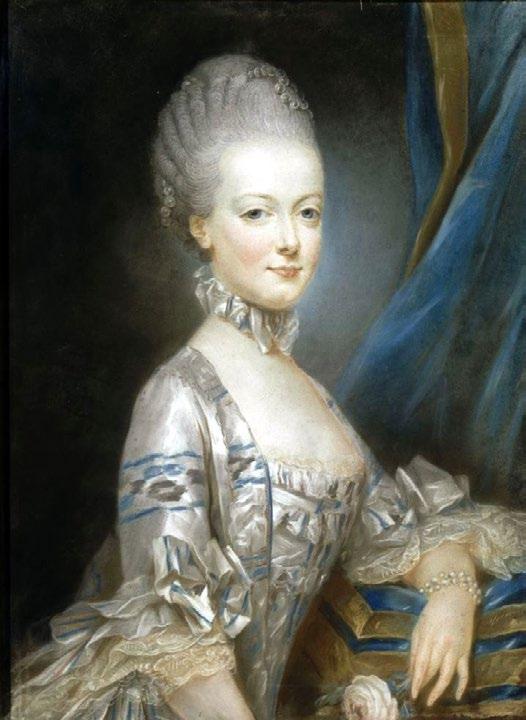

Portrait of King Louis XVI, painted by Joseph Duplessis circa 1776-1778, formerly attributed to antoine-francois Callat. located in the bedroom of petite apartment de la reine.
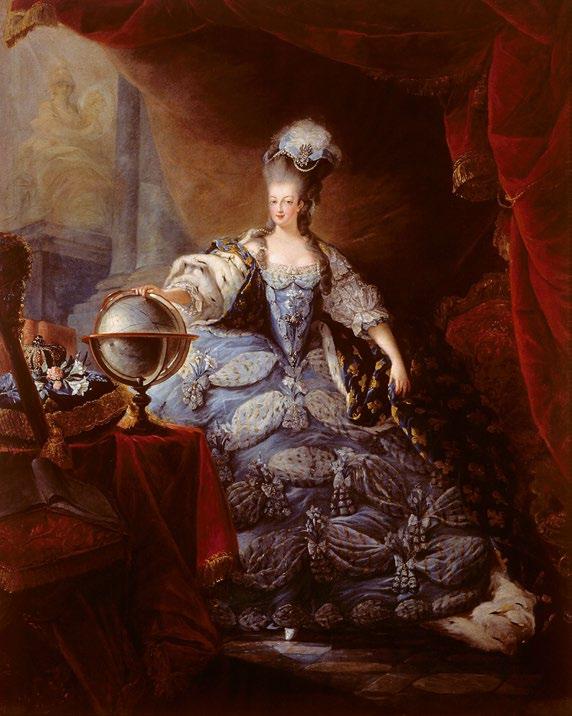
left: Portrait of marie antoinette at age 13 by joseph ducreux in 1769 - a small portrait was sent to the dauphin to show him what his future bride looked like. right: portrait of marie antoinette by jean-baptiste andre gautier-dagoty in 1775 located at the palace of versailles.
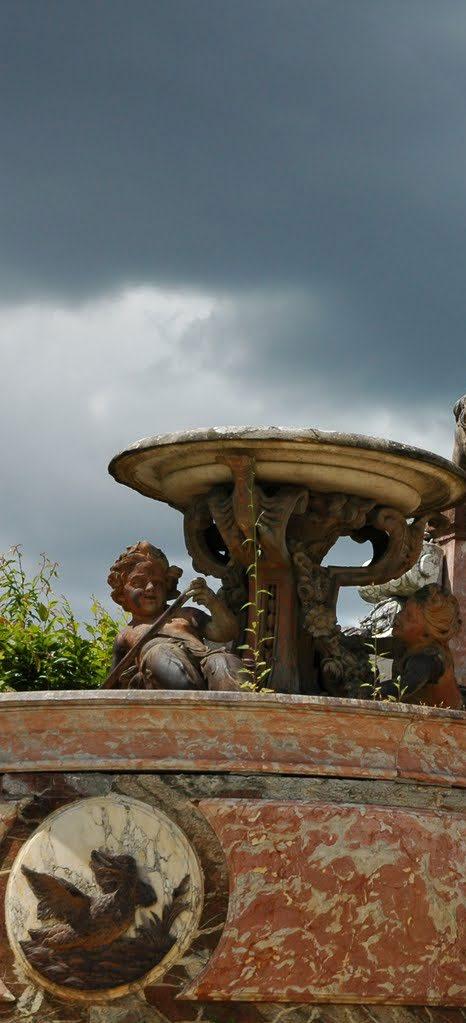
Portrait of King Louis XV, painted by maurice de la tour in 1748.

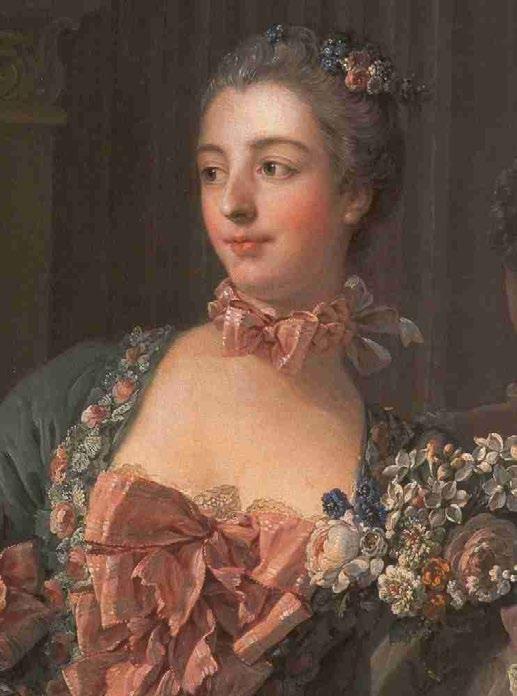
Portrait of madame du pompadour by francois boucher in 1756. Portrait of madame du barry by francois hubert-drouais in 1770.


Later, in the early 20th century it was said Marie may have died by pleuropneumonia induced by tuberculosis. Another doctor seemed to think she ultimately died from her miscarriage; either by a fragment of placenta getting caught in her uterus, or a rare form of cancer from a cyst that could have developed after the placenta was expelled.
In the early 1680s, after the death of Marie, Madame de Montespan soon left the court. Queen, Marie-Thérèse noticed the good influence Madame de Maintenon had on the King, because the Queen said she had never been treated so good, seeing as Madame de Montespan had always treated her rudely. Queen Marie-Therese died in July 1683, and the King privately married Madame de Maintenon a few months after. The marriage was considered morganatic because of

The grand trianon below: a flower from the gardens of the grand trianon. above, below & pg 18-19 photos: nicolette johnston
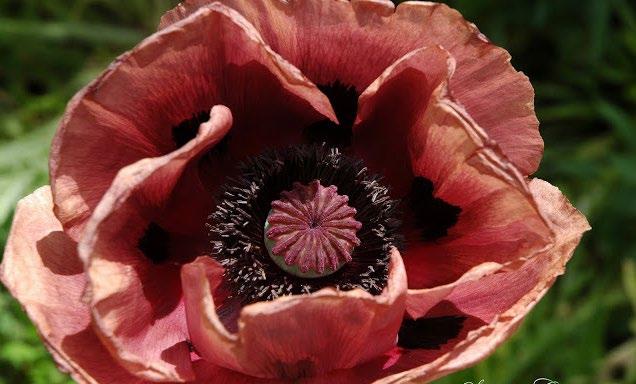
their varying social ranks, and there are no formal records of the marriage.
By 1687, the fragile porcelain tiles of the Trianon de Porcelaine had deteriorated so badly, that the King ordered a demolition of the pavilion. Architect, Jules Hardouin Mansart, doubled the size of the pavilion with his redesign using a red marble from Languedoc.
In 1688, it was inaugurated as the Grand Trianon by Louis XIV alongside his new wife, Madame de Maintenon. Volume 1 • Issue 1
The Petite Trianon N early a century later, a much smaller chateau was built between 1762 and 1768 during the reign of Louis XV. Designed by Ange-Jacques Gabriel, near the botanical garden within the grounds of the Grand Trianon. The Petite Trianon was constructed for King Louis XV’s long-term mistress, Madame de Pompadour, though she died only four years after it was completed. It was then occupied by her successor, Madame du Barry.
Upon succession to the throne in 1774, at just 20-years-old, King Louis XVI, gave the chateau and its park to his 19-year-old Queen Marie Antoinette.
Wanting to escape the burden, pressures, and judgements of family and the court, Petite Trianon was Marie Antoinette's place of leisure where she could rest. No one was permitted to enter the property without the young Queen’s permission, even her husband the King. It was a place where she could alienate herself from the court, and where she only invited those from her innermost circle.
Designed for intimacy and pleasure, a table was raised and lowered in the “salles a manger” so servants could set the table sight unseen. Her bedroom had mirror panels that could be raised or lower by turning a crank to obscure windows and reflect candlelight.
On October 5, 1789, as Marie Antoinette was outside in her gardens, a page brought news of the arrival of an armed crowd from Paris. The next day, the royal family was forced to depart. Gardeners and other staff continued to live at the Petite Trianon. In July 1792, with the monarchy overthrown, furniture, art, and other collectibles were given to auction and widely scattered about. The Petite Trianon was later refurbished by Napolean.
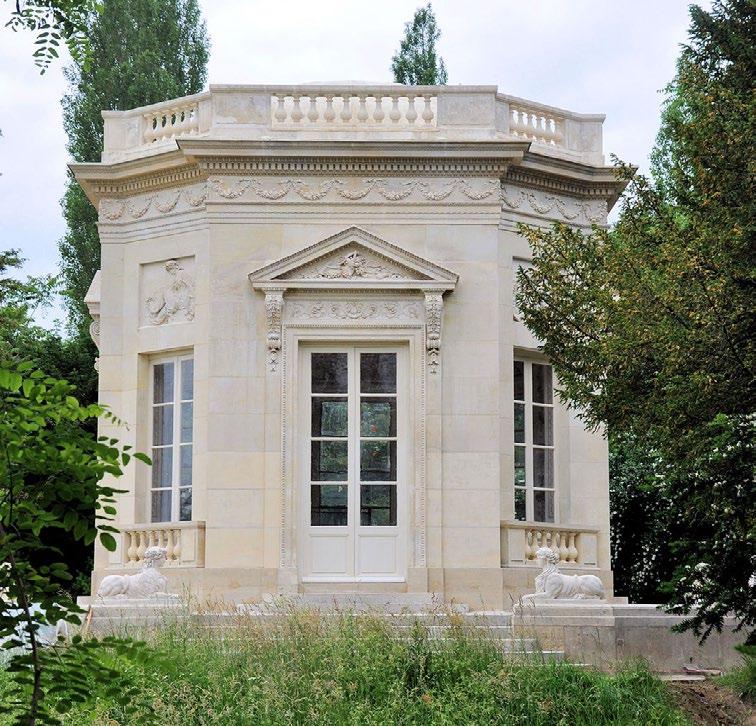
The petite trianon
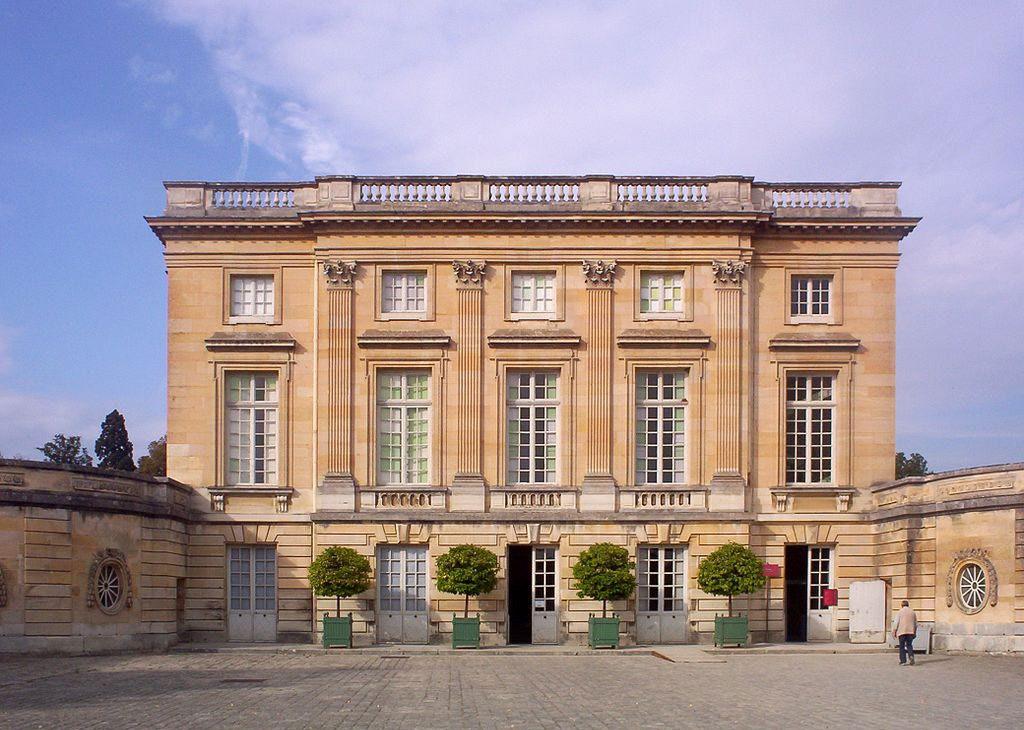
Marie Antoinette's
Built in 1783 for Marie Antoinette near the Petit Trianon, the Hameau de la Reine was designed by Richard Mique, the Queen’s favorite architect. The Hameau was inspired by Prince of Conde’s Hameau de Chantilly. It consisted of a meadowland with lakes, streams, a Temple of Love on an island, an octagonal belvedere, grotto and cascade. Rustic buildings were built in a vernacular style inspired by Norman or Flemish design alongside a pond and mill wheel. One of the main purposes for the design of the Hameau was to create more of a rural countryside atmosphere near the Petit Trianon.
The farm was created to provide milk and eggs for the Queen. It had a dairy, dovecote, boudoir and a barn which burned in the French Revolution. It was often called the Swiss Hamlet, because many animals came from Switzerland. The Queen and her children would wear peasantry-style clothing to stroll around the farm where she enjoyed pretending to live a simpler life, although many took it as a form of mockery. It was also rumored that she met her lovers at the Hameau.


Hameau de la Reine

Interested in advertising? Your business, chateaux, castle or town could have a spot here.


View our Media Kit at: www.colettepublications.com
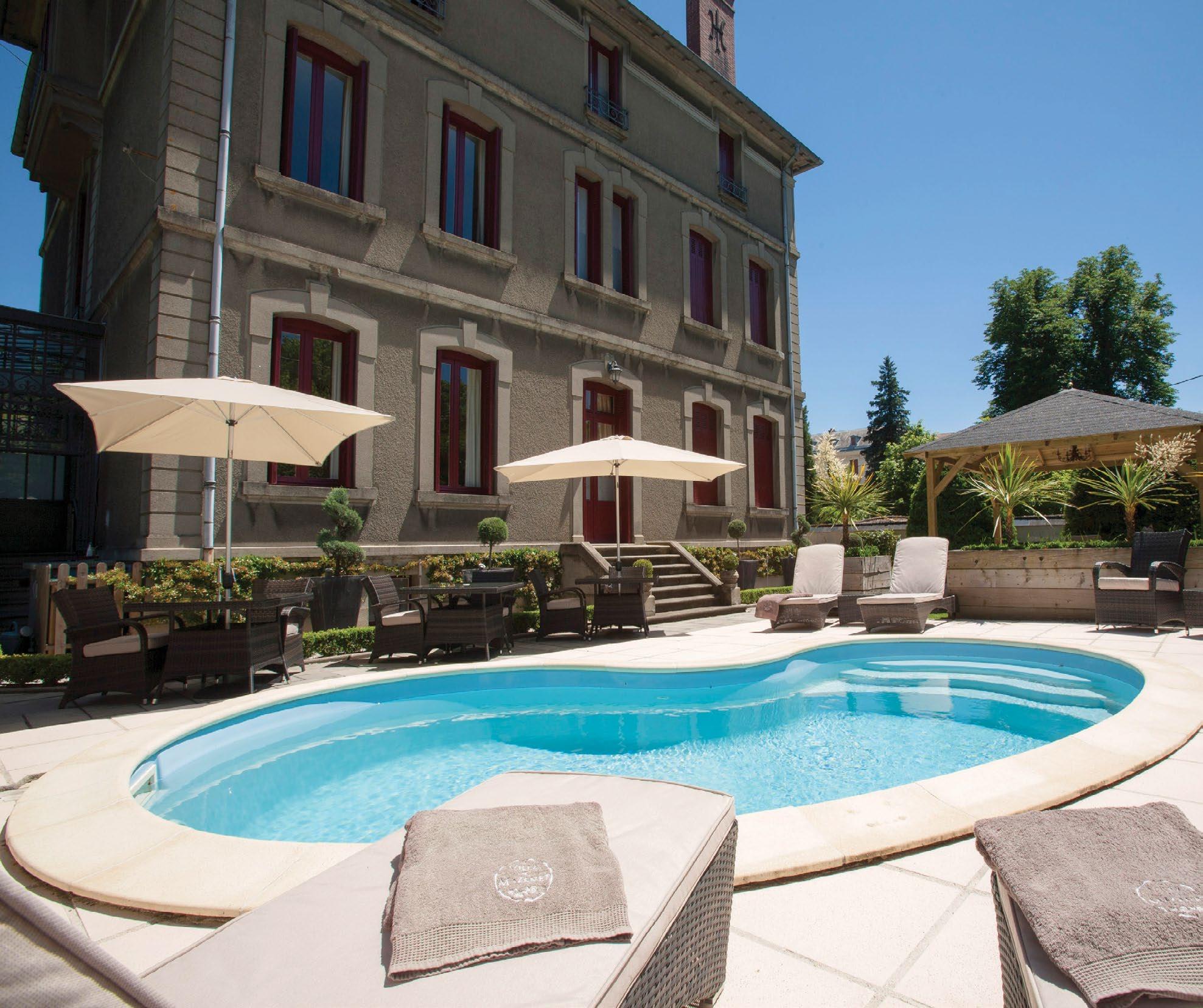

Come and stay at La Villa de Mazamet, France’s leading luxury bed & breakfast, located in the heart of SW France.
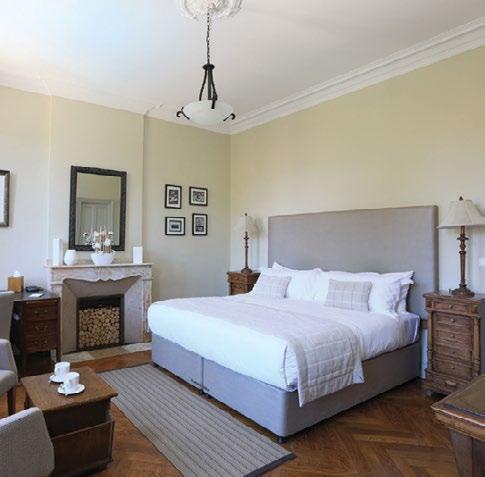

e
Trip Advisor Traveller’s Choice winner for 8 years in a row…
e
Book directly with us for the best rates
Explore La Villa at www.villademazamet.com





